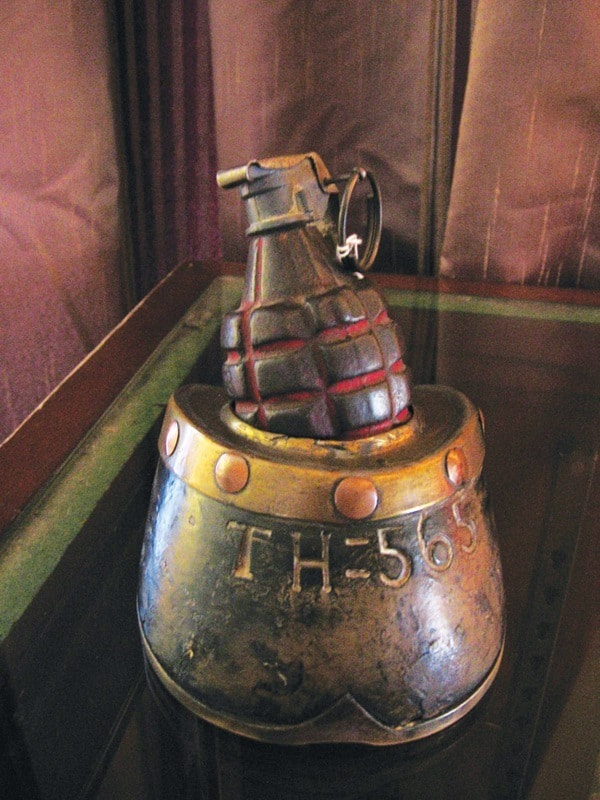Trench art is an enigmatic term. One gets the image of soldiers creating art in mud spattered trenches.
However, items made during wartime were in fact created at a distance from the front lines. Which is why it is best to think of trench art in terms of a concept.
Dr. Nick Saunders, who has written one of the few books on the subject, Trench Art: A Brief History and Guide, describes it as “any object made by any person, from any materials that are or have been associated with armed conflict.”
Items have either been created by soldiers, prisoners of wars, or by skilled artisans. These three groups have served as a classification system for the trench art world, each category added new depth to not only the materials, but the story behind the object.
Although trench art has taken its name largely from the First World War, it existed well before 1914, and is still made today. The first citied example dates back to the Napoleonic Wars. Items largely consisted of metal, cloth, bone and wood.
Given the variety of items made, it makes it easier to dismiss all objects simply as “curious junk from war” (Saunders). However, each object is rich in symbolism and even irony, which also tells a story about family history.
The Maple Ridge Museum has two pieces of trench art.
One is a brass vase made from a German shell casing from the First World War. There are handles on each side, with insignia from a war uniform welded on the front.
The other is made from a horse hoof and grenade. The piece belonged to Andre Marc (1882-1959), a pioneer of Yennadon.
Marc came to the area by way of Victoria, where he met his wife, Alice Claudie Pichon in 1907.
Originally both from France, Marc was the son of a lawyer; Alice was the daughter of a gunsmith who was serving as France’s consul in Victoria. Both had a keen sense of adventure, and when they married two years later, they procured a homestead of 175 acres north of Haney, near Loon Lake (which is now part of the UBC Research Forest). Although he and his family left shortly after in 1914, when Marc joined the French Army to fight in the First World War, they returned to their homestead in 1927, where he lived and worked until his death in 1959.
While in the army, Marc served for four years as a major, and was awarded the French Military Cross for gallantry.
Friends of Marc made this piece as a reminder of his horse, Carrington. During a battle at Reumont, France on Oct. 19th, 1919, a grenade was launched at Marc. Carrington absorbed the impact, and saved Marc’s life. This piece was made as a memorial to the horse.
The greatest lesson one can take from the strange and curious nature of trench art is to look twice at those items stored in attics, or basements, passed down from one generation to the next, and to ask questions. The more history we know, the more the silent voices can be heard.
Allison White is curator at the Maple Ridge Museum.
